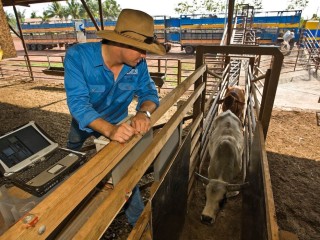 The market diversification opportunity presented by the two-month shutdown of trade to Indonesia has not translated into sustained sales of northern cattle to alternative markets, official live export statistics indicate.
The market diversification opportunity presented by the two-month shutdown of trade to Indonesia has not translated into sustained sales of northern cattle to alternative markets, official live export statistics indicate.
While shipments were hastily arranged to other markets such as the Philippines, Malaysia and Egypt during the Federal Government's ban on exports to Indonesia, export data shows that most activity to those markets fell away after the suspension was lifted.
Given the high prices offered by Indonesia before and after the ban, and the shorter and lower-cost sea voyages involved, it is little surprise that exporters chose to re-focus their attentions on rebuilding trade to their most valuable market when it came back online.
Last week’s announcement that Indonesia will cut its annual import quota from 520,000 cattle in 2011 to 283,000 cattle in 2012 has sparked new calls for the industry to diversify its markets and reduce its heavy reliance upon Indonesia.
While the cutbacks will force exporters to do that, the shipping data shows that when given a choice, Indonesia remains the most attractive proposition by far.
Export data from January to October 2011 shows the Philippines took 16,390 Australian cattle during the period, 11pc above the 14,478 shipped in the same period last year. Exports to Malaysia during the same period totalled 10,470 head, down 14pc year on year, while exports to Egypt were 14,489 head, 74pc lower than the previous year.
Most of those shipments occurred during June and July when Indonesia was closed, and at lower rates to the prices available in Indonesia prior to and after the ban. Where steers to Indonesia were commanding at least 200c/kg when the trade was halted in June, prices for a shipment to Egypt in July were quoted at 160c/kg for steers.
The lower prices offered by other markets provided limited incentive for exporters to actively seek further orders from those markets when trade to Indonesia re-opened. The shipping data shows that most re-diverted their focus to Indonesia after the ban, with shipments to the market returning to year earlier levels of 39,424 head by October.
The shipping data also shows that in 2011 Australian exporters were able to consolidate the strong gains made in Turkey last year.
Exports to the market totalled 56,557 head from January to October, and at least one further shipment should be included in final figures for 2011. That is expected to bring overall exports to Turkey for 2011 close to the 65,000 head delivered last calendar year.
While exporters such as Wellard Rural Exports have delivered some bos Indicus cattle into that market, Turkey has a preference for bos Taurus cattle and as such is not seen as a direct alternative at this point to Indonesia.
As earlier noted, Australian exports to Egypt are running a long way behind where they were this time last year.
Egypt is considered a market with growth potential, and once imported as many as 200,000 cattle a year from Australia. Its reliance on imports is increasing in line with cutbacks to its own dairy-based cattle herd, which is being reduced by ongoing disease culls (for outbreaks of FMD, Lumpy Skin Disease and Bovine Ephemeral Fever) and high domestic beef prices as a result of the general shortage of cattle – which in turn is encouraging more farmers to sell more female cattle for slaughter.
However, despite its demand for cattle, Egypt is also a very price-sensitive market by virtue of its close relative proximity to a wide range of competing export suppliers such as US, Canada, South America, Europe and Africa. The lower price available to Australian exporters compared to Asian markets can challenge the viability of sending higher-cost, long-haul shipments to Egypt.
One of the most positive stories from the 2011 export year has been the continued strength of the market to Israel, which took 44,114 cattle from January to October, and is expected to finish at close to 50,000 head when final tallies for 2011 are counted.
Israel takes young 250kg Euro/British Breed cross bulls. The trade operates out of the west where many northern producers retain a percentage of their bulls to send south for finishing, which serves the twin purpose of removing the cattle from the northern Blue Tongue zone for the required minimum period before export.
Shipments of breeding females to Russia led by Elders were another highlight of the export year, with exports to the market from January to October totalling 16,356 head, a 134pc increase on year earlier levels.
